Let's say you have:
class Foo
{
public void Bar()
{
// instance
}
public static void Fiz()
{
// instance
}
}
And you do:
var temp = new Foo();
Foo.Fiz();
temp.Bar();
Your code is translated to something like:
var temp = new Foo();
Foo.Fiz();
Foo.Bar(temp);
The this is translated as an hidden parameter of the class (the first one). In C++ for Intel this is called the thiscall calling convention. For static functions, simply there isn't this parameter.
If you open the Disassembly function on that code you'll see that it is something like:
var temp = new Foo();
00007FFBD48042EC lea rcx,[7FFBD48563D8h]
00007FFBD48042F3 call 00007FFC33E42400
00007FFBD48042F8 mov qword ptr [rsp+2B0h],rax
00007FFBD4804300 mov rax,qword ptr [rsp+2B0h]
00007FFBD4804308 mov qword ptr [rsp+2B8h],rax
00007FFBD4804310 mov rcx,qword ptr [rsp+2B8h]
00007FFBD4804318 call 00007FFBD46ECA48
00007FFBD480431D mov r11,qword ptr [rsp+2B8h]
00007FFBD4804325 mov qword ptr [rsp+30h],r11
Foo.Fiz();
00007FFBD480432A call 00007FFBD46ECA40
temp.Bar();
00007FFBD480432F mov r11,qword ptr [rsp+30h]
00007FFBD4804334 cmp byte ptr [r11],0
00007FFBD4804338 mov rcx,qword ptr [rsp+30h]
00007FFBD480433D call 00007FFBD46ECA38
As you can see the Foo.Fiz is a direct call 00007FFBD46ECA40, while the temp.bar() first does a check for the null (I think, the mov + cmp), then puts in rcx the reference and does the call
